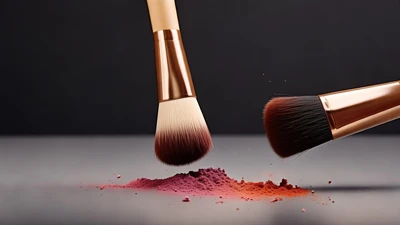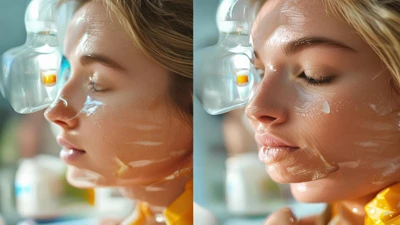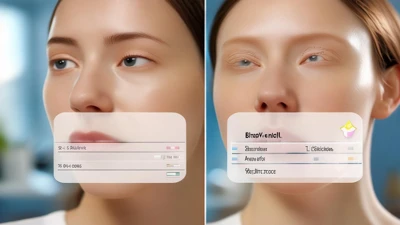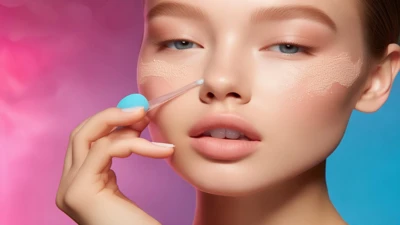
The Struggle with Sunscreen for Those with Sensitive Skin
Protecting your skin with sunscreen is crucial. For sensitive skin, the decision between physical and chemical filters can feel like a challenge. Sensitive skin, which is known for its increased reactivity, redness, and proneness to irritation, requires thoughtful selection of ingredients. This writing analyzes if mineral-based sunscreens are inherently more effective than chemical ones for people with sensitive skin. This discussion aims to supply a well-rounded answer. It uses scientific facts, dermatological rules, user insights, and environmental considerations to do so.
Discover the Inner Workings of Physical and Chemical Sunscreens Through Their Ingredients and Methods
How Physical Sunscreens Act as Barriers
Zinc oxide and titanium dioxide are commonly found in physical sunscreens, which are also referred to as mineral sunscreens. These ingredients stay on the surface of the skin, creating a protective layer that reflects and scatters UV rays. Once applied, their mechanism begins to work straight away, ensuring instant protection. Both UVA and UVB rays are blocked by zinc oxide, making it a versatile sunscreen agent.
The Process of Absorption and Conversion in Chemical Sunscreens
In contrast to other types, chemical sunscreens utilize organic compounds such as avobenzone, oxybenzone, and octocrylene. The ingredients trap UV radiation. They convert it into heat. The heat is expelled from the skin. They must bind to the skin for 15–30 minutes before they can be effective. The lightweight nature of these products earns them constant praise. At the same time, worries about sensitivity issues have not disappeared.
Significant Differences in Makeup
Thicker physical sunscreens used to leave a white cast, but modern advancements have minimized this drawback. Chemical sunscreens are easier to apply but may have ingredients like fragrances and preservatives that trigger sensitivity issues.
Why Ingredient Choices Are Crucial for Sensitive Skin
Chemical filters are known for their irritation potential.
Certain chemical filters, including oxybenzone and avobenzone, were identified in a 2019 study in the Journal of the American Academy of Dermatology as potential triggers of allergic reactions or contact dermatitis in sensitive people. Among participants claiming sensitive skin, 15% were irritated by oxybenzone.
Mineral-Based Sunscreens and Their Skin-Friendly Nature
Zinc oxide is one of the mineral filters that are less likely to irritate the skin. A 2021 review in Dermatitis stated that physical sunscreens are frequently suggested for issues like rosacea and eczema because they are non-reactive. Dr. Zinc oxide provides a calming effect and fights inflammation. That's why it's recommended for compromised skin barriers, according to Jennifer Herrmann, a dermatologist in Beverly Hills.
A Look at Skincare After Medical Procedures
One hundred patients receiving laser resurfacing were studied in a 2020 article from the Journal of Cosmetic Dermatology. The use of physical sunscreen was associated with a 40% decrease in redness and stinging incidents compared to chemical sunscreen usage.
How to Balance Protection and Reactivity with Safety and Effectiveness
Covers multiple spectrums and stays stable in light.
Physical sunscreens outperform others in photostability, even though both types ensure broad-spectrum protection. Under sunlight, chemical filters such as avobenzone break down. Frequent reapplication becomes necessary. Other substances may fluctuate, but zinc oxide is steady. Protection is unwavering.
Concerns Regarding the Absorption of Nanoparticles
It is argued by critics that nanoparticles in zinc oxide or titanium dioxide could reach beneath the skin's surface. Based on a 2022 EU Scientific Committee on Consumer Safety report, nanoparticles remain outside the dermal barrier in both healthy and damaged skin, leading to fewer safety concerns.
The hormonal and systemic hazards linked to chemical filters are concerning
Some people criticize chemical sunscreens as they may get absorbed systemically. Results from a 2020 FDA study showed oxybenzone in 97% of urine samples. There are now concerns about its potential to cause endocrine disruption. Since research is still ongoing, it might be better for sensitive-skinned people to avoid these risks.
The Environmental Side and the Ethical Side
Reef-Safe Formulations
Coral bleaching is partly caused by oxybenzone and octinoxate found in chemical sunscreens. The 2018 ban by Hawaii on these items reveals the environmental strain. Physical sunscreens, particularly non-nano zinc oxide, are often labeled "reef-safe," aligning with eco-conscious values.
Sustainability Challenges
Physical sunscreens are better for the environment, yet sustainability remains a hurdle for them. Ecological issues arise from zinc oxide mining. Some brands also package their products in plastic materials. Hope can be found in the trend towards refillable containers and mineral-based formulations.
The Practical Side of User Experience and Compliance
Outer Feel and Decorative Beauty
People often find fault with physical sunscreens because of their chalky finish. New developments, such as tinted or micronized options, have made the experience better for users. Mineral sunscreens from brands like EltaMD and La Roche-Posay now come with textures that feel cosmetically elegant.
Analysis of Consumer Preferences
In 2023, Consumer Reports surveyed sunscreen preferences and learned that 68% of sensitive-skinned users liked physical sunscreens for their gentleness. Despite this, 45% were unhappy with the initial white film. Chemical sunscreen fans enjoy the product's featherlight touch. Nevertheless, they face issues with acne and skin irritation.
Sharing My Story: The Adventure of Using a Product
My skin is prone to rosacea. Persistent burning from chemical SPF made me switch to zinc oxide sunscreen. Though the thicker texture took some getting used to, the benefits of fewer flare-ups outweighed the drawbacks.
Dermatologist Advice and Insights
Professional Guidelines
For those with sensitive skin, the AAD advises using physical sunscreens because they are less irritating. Dr. According to Mona Gohara, a professor at Yale, mineral blockers set the benchmark for people suffering from eczema, allergies, or post-inflammatory hyperpigmentation.
Customization and Layering
Dermatologists frequently recommend applying physical sunscreen on top of antioxidant serums. g. You can enhance photoprotection by using vitamin C. Some people dislike mineral textures. For them, chemical sunscreens marked "fragrance-free" and "non-comedogenic" may still be used if patch tested.
A Thoughtful Determination
People with sensitive skin might find physical sunscreens safer because of their gentle and soothing properties. Individual needs and comfort should guide your decision. Chemical sunscreens can work well for individuals who do not suffer from serious sensitivities, as long as they are chosen properly. User safety and environmental responsibility should be top priorities for the skincare industry as research continues to develop. Physical sunscreens are considered better for sensitive skin. This is my current view, which matches that of dermatologists. Users should test various formulations for comfort and protection.














